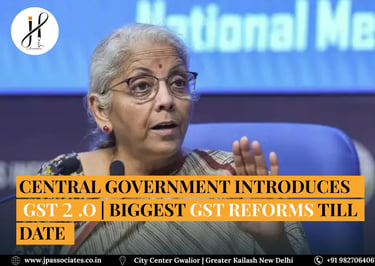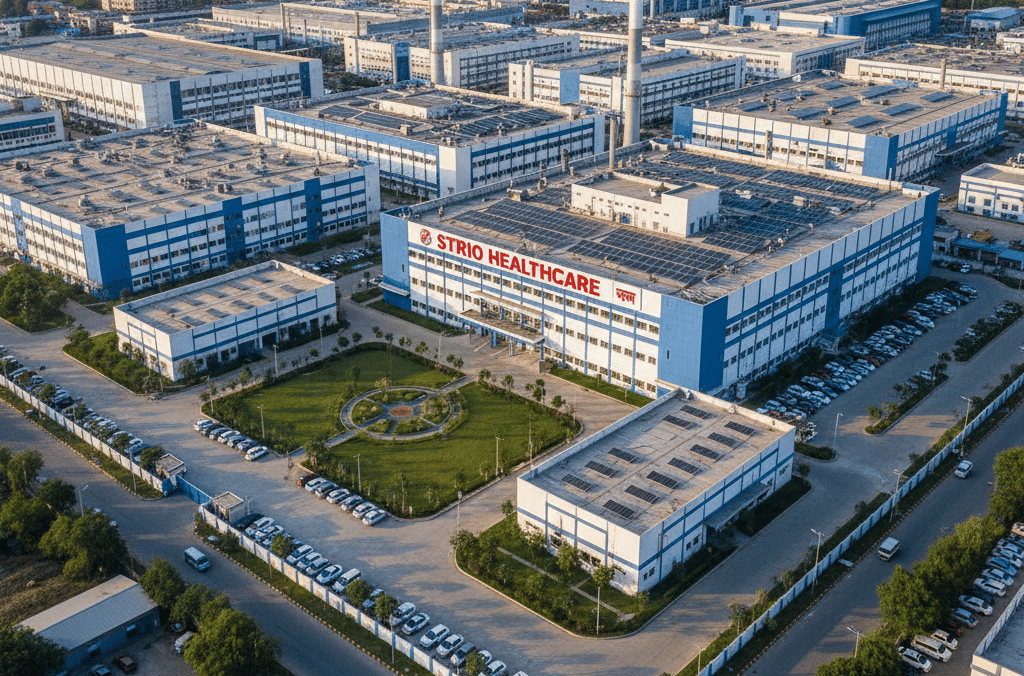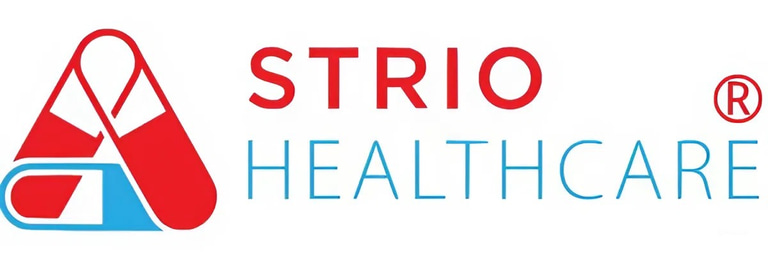Pharmaceutical Industry & 2025 GST Reforms 2.0
10/20/20258 min read


India’s Pharmaceutical Industry in 2025: Scale and Global Reach
India’s pharmaceutical sector has grown into a powerhouse of the economy, valued at roughly US$50 billion (about ₹4.1 lakh crore) as of FY 2023-24. This industry contributes approximately 1.7% of India’s GDP, reflecting its significant economic role. The domestic market makes up around $40+ billion of this value, indicating India’s huge local consumption of medicines, while pharmaceutical exports earned about $25.3 billion in 2022-23. India is the world’s largest provider of generic medicines by volume – it supplies roughly 20% of global generic drug exports – and is also the biggest vaccine producer, meeting over 60% of global vaccine demand. Often called the “pharmacy of the world,” India ranks 3rd globally in pharmaceutical production by volume (13th by value). Its manufacturers export affordable medicines worldwide, including 40% of the generic drugs used in the US and 25% of all medicines in the UK. These impressive numbers underscore the scale of India’s pharma industry and its vital importance both to national health care and the global drug supply.


Evolution of Pharma Taxation in India (1990s–2010s)
Historically, the tax system on medicines in India has changed dramatically over the decades. In the 1990s, pharmaceutical products were subject to multiple indirect taxes, leading to a high cumulative tax burden. The central government levied an excise duty on manufacturing (often in double-digit percentages), and states imposed their own sales taxes or other levies (commonly around 8–10% on medicines). This meant that a medicine’s price included layered taxes – for example, a drug could effectively bear 15–20% or more in combined taxes, with excise tax charged first and then sales tax applied on top (cascading effect). Such a fragmented system made medicines relatively expensive and the tax structure complex.
The 2000s brought initial reforms. In 2005, India introduced a uniform Value Added Tax (VAT) at the state level to replace the old sales tax regime. Under VAT, most states taxed medicines at a reduced rate (typically 4%–5%), which was lower and more uniform than the previous sales taxes. This helped ease prices slightly and removed some cascading, since VAT is charged only on the value addition. Meanwhile, the central excise duty on pharmaceuticals was adjusted over time – it was around 16% in early 2000s but was later cut to spur growth (dropping to 8% by 2008) and then inched up again to about 12.5% by the mid-2010s. By the 2010s, just before nationwide GST, the typical tax load on a medicine consisted of roughly 5% VAT by states and 12% excise by the center. In practice, certain essential drugs enjoyed some tax concessions (for example, some life-saving medicines had either no excise or very low rates), but most formulations had an effective total tax in the low teens. The tax regime still had duplication and cascading – for instance, excise was charged on a manufacturer’s ex-factory price (often on a capped percentage of MRP), then VAT applied on the price including excise, which slightly inflated the end cost. This multi-layered system was complex for businesses to comply with and added to medicine costs for consumers. By 2015, there was broad recognition that a simpler, single tax was needed. The stage was set for a major overhaul with the Goods and Services Tax.
2017 – GST Introduction: In July 2017, India implemented the first Goods and Services Tax (GST) regime, unifying most indirect taxes into one. Pharmaceuticals were placed mostly in a 12% GST slab under the original structure (GST 1.0), replacing the earlier excise+VAT combo. A few categories of medicines were put in the 5% GST bracket (and certain critical life-saving drugs made exempt (0% GST) to keep them affordable). Comparatively, under the old system many common medicines had an effective tax of around 9–10%, so the new 12% GST meant a slight increase for some drug prices, but the trade-off was a far simpler tax structure with seamless input tax credits. The introduction of GST eliminated the cascading of taxes and standardized medicine taxation across all states, improving ease of doing business for pharma companies. This was a major tax reform for the industry, but it wasn’t the end – further rationalization was on the horizon.


GST Reforms 2.0: Massive Tax Cuts on Medicines in 2025
In September 2025, the government ushered in “GST 2.0” reforms – a landmark rationalization of GST rates – which has particularly big implications for the pharmaceutical and health products sector. Under these reforms, the GST on all drugs and medicines was slashed from 12% down to just 5% (a uniform 5% rate on nearly all pharmaceutical formulations). In addition, 36 essential life-saving drugs for critical illnesses (such as certain cancer, HIV, and rare disease treatments) that were previously taxed at 12% were made entirely GST-free (0% tax), and a few important medicines that had been at 5% were also exempted. The nutraceuticals segment – which includes vitamins, supplements, and health supplements often classified separately – saw an even bigger change: products that had been taxed at 18% GST (and some at 12%) were all brought down to 5%. This represents a huge tax reduction for over-the-counter health supplements and nutraceutical goods, making them much more affordable.
The government was keen to ensure these tax cuts actually benefit consumers and are not pocketed by middlemen. Thus, regulators mandated that the price reductions be passed directly to the end customer. Concretely, pharmaceutical companies, distributors, and retailers were instructed to reduce the Maximum Retail Price (MRP) of all medicines in line with the lower GST. The math works out to about a 6.25% MRP reduction on medicines (for a tax drop from 12% to 5%) and 11.02% MRP reduction on items like nutraceuticals (18% to 5%). In other words, if a medicine had an MRP of ₹100 before, its price should drop to about ₹93.75 after the tax cut; a nutraceutical product that was ₹100 should come down to around ₹88.98. These percentage cuts ensure that consumers truly get the benefit of the tax decrease in full. Companies have been given guidelines to update price lists accordingly, and India’s drug price regulator (NPPA) even allowed firms to affix revised price stickers or issue supplementary price lists so that existing inventory could be sold at the new lower effective prices. Importantly, Strio Healthcare has fully welcomed these reforms – we immediately adjusted and cut the MRP of all our products (both medicines and nutraceutical supplements) to comply with the new 5% GST rule. By doing so, Strio Healthcare is ensuring that patients and customers see the price drop at pharmacies and experience more affordable healthcare without delay. This GST 2.0 rate cut marks a historic shift, bringing down medicine taxes to one of the lowest levels in decades.


Benefits for Consumers and the Pharma Supply Chain
This sweeping tax reform delivers benefits not only to patients but across the entire pharmaceutical supply chain – from manufacturers and marketing companies to super-stockists, stockists, and neighborhood chemists. First and foremost, patients and end consumers are the biggest winners as medicines are now significantly cheaper. A 5% GST on drugs (down from 12%) in addition to a 6.25% reduction in retail prices for most medicines. For example, a family that used to spend ₹10,000 on monthly medications will save about ₹625 each month now – an annual savings of ₹7,500, which is substantial relief, especially for those with chronic illnesses or high-cost treatments. Across the country, if we consider the size of the domestic pharma market (~₹3.5 lakh crore in annual sales), this price cut could leave over ₹20,000 crore (₹200 billion) in consumers’ pockets yearly that would otherwise have gone as tax. This means more disposable income that families can use for other needs or additional healthcare. More importantly, lower costs on essential drugs improve access and adherence – patients are more likely to buy the medicines they need and stick to full courses of treatment when prices are a bit more affordable, leading to better health outcomes. For extremely expensive therapies (like certain cancer drugs now taxed 0%), patients will save thousands or even lakhs of rupees, potentially making life-saving treatments attainable for many who previously struggled with costs.
Businesses in the pharmaceutical distribution chain are also poised to gain in the long run. Manufacturers and pharmaceutical companies might see a surge in demand for their products as lower prices can broaden the customer base. Medicine demand isn’t entirely elastic (people don’t buy a lot more pills unless needed), but improved affordability can mean more people complete their doses or more hospitals stock sufficient supplies. The nutraceutical and vitamins market, which is somewhat discretionary, could grow faster as an 11% price drop entices more health-conscious consumers to purchase supplements regularly. Higher volume sales will help offset the lower per-unit price, potentially keeping revenue growth strong for producers. Additionally, the GST cut helps reduce issues of inverted duty structurethat some manufacturers faced (for instance, many raw materials and Active Pharmaceutical Ingredients were taxed at 18% while finished drugs were 12%; now finished drugs are 5%, increasing the inversion – however, the government has promised faster GST refunds of input credits, which will improve manufacturers’ cash flow). With quicker refunds and less tax outgo, pharma companies can manage working capital better and invest more into production or R&D, which in turn benefits the business and consumers with more supply and new products.
Distributors, C&F agents, and super-stockists – the middlemen who carry medicines from factories to retailers – should also benefit from an expected growth in turnover. Their margins in percentage terms typically remain the same (the trade margins are calculated on the pre-tax base price, which hasn’t changed), so while the absolute rupee margin per unit might dip slightly when MRP falls, the volume of sales is likely to increase over time, compensating them. Many large distributors have welcomed the simpler single low tax rate, as it reduces compliance headaches and chances of tax disputes between states. Retailers and chemists (including small pharmacy owners) will see happier customers due to cheaper bills, which can build loyalty and potentially increase footfall to their stores. In the immediate term, retailers had to manage the transition – selling old stocked medicines at the new lower MRP meant a one-time hit in inventory value. To address this, many pharma companies (including Strio Healthcare) and wholesaler networks worked together to adjust credit notes and discounts so that chemists aren’t stuck with losses on existing stock. The government also clarified that no penalties would be imposed on pharmacies for simply sticking to new prices on old stock during the changeover period. Going forward, pharmacists could see higher sales volumes; for example, someone who previously bought one month’s medicine might be more willing or able to buy two months’ supply upfront now, or purchase an additional nutritional supplement along with prescription drugs since the overall cost is lower. Moreover, a lower tax means more transparent pricing – customers can clearly see that the tax on their bill is minimal, which may improve trust and spending willingness.
Overall, GST 2.0’s tax reductions are expected to boost the entire pharma ecosystem. The government estimates that the overall GST cuts (across all sectors, including pharma) will spur consumer spending and have a multiplier effect on the economy – in fact, early signs show an uptick in sales of various goods. In the healthcare domain, making medicines and supplements more affordable should lead to better public health outcomes as well as a healthier business environment. Pharmaceutical companies might not gain extra profit per unit (since they passed on the tax cut), but they stand to gain from a larger market size and improved patient goodwill. The common goal is that no Indian has to skip or delay treatment due to medicine costs. At Strio Healthcare, we believe these reforms greatly align with our mission of providing quality healthcare products at affordable prices. By reducing our product MRPs in line with the new GST rates, we are proud to help patients save money without compromising on their health. The GST reforms 2.0 thus represent a win-win: patients spend less on essential medicines, and the pharma supply chain benefits from expanded demand and a simpler, more efficient tax system – ultimately strengthening India’s healthcare sector for the future.


Contact Us
212, Sahajanand Estate, Sarekhej, Ahmedabad, Gujarat - 382210
© 2025. All rights reserved.


An IAF & ISO 9001:2015 Certified Co.
